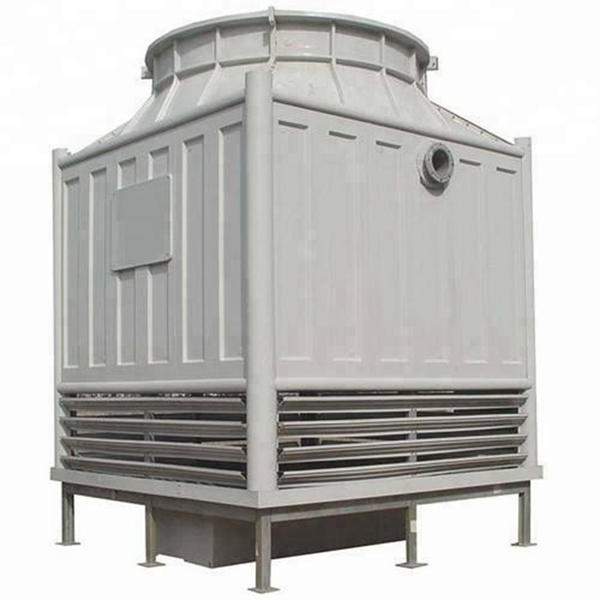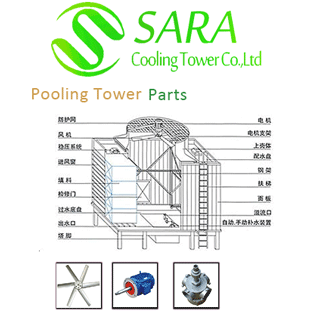FRP Cooling Tower
Two Types of FRP Cooling Tower
FRP Cooling Tower
What Is FRP cooling tower
FRP cooling tower meaning fiberglass reinforced plastic cooling tower innovated in a special way for heat exchange allowing air and water to come into contact with each other to the lower temperature of hot water. FRP cooling tower working is mechanically considered as heat rejection device where wase heat will be rejected to the atmosphere through the aid of a cooling water stream towards a lower temperature.
FRP cooling tower is commonly applied in oil refineries, chemical plants, petrochemical plants, thermal power stations and for cooling buildings through HVAC systems. This cooling towers could be either in natural draft or induced draft.
Cooling Tower Come in Different Types
Counterflow cooling towers, crossflow cooling towers, natural draft cooling towers, forced draft & induced draft cooling towers and industrial cooling tower.
Cooling Tower Manufacturer offer two types of FRP cooling tower, you can learn frp cooling tower specification more.
What are FRP Cooling Towers Used for?
Basically, FRP cooling towers are designed for rejecting and disposing heat from chillers. It is less efficient for air cooled chillers than water cooled chillers because of the rejection of heat from water in the tower to near wet-bulb temperatures.
Six Reasons Why Fiberglass Products Are Used In Cooling Towers
Cooling towers are an important component of many industrial processes as they ensure efficient removal of excess and/or waste heat generated during various manufacturing processes. Most cooling towers have traditionally been built from wood, but it is not an ideal structural material given the long-term effects of water on wood. Here are six reasons why fiber-reinforced polymer structural profiles (FRP) are the best product for building cooling towers:
Corrosion resistance
Cooling towers are exposed to water and chemicals, which can corrode traditional materials. Fiberglass, also known as fiberglass-reinforced polymer (FRP) or fiberglass-reinforced plastic (GRP), has excellent corrosion resistance, making it an ideal material choice for cooling tower construction. It can withstand harsh conditions and prolonged exposure to moisture, chemicals and UV radiation without degrading like most traditional materials.
Lightweight and high strength
Fiberglass is a lightweight material with a high strength-to-weight ratio. This makes it easier to transport, handle and install cooling tower components. Despite its light weight, fiberglass is structurally strong and can withstand the loads and stresses encountered in cooling tower applications.
Design flexibility
Fiberglass can be molded into a variety of shapes and sizes, allowing flexibility in cooling tower design. It can be easily formed into complex geometries and customized configurations to optimize performance and efficiency. This flexibility allows manufacturers to create cooling towers tailored to specific project requirements and space constraints. Traditional wood cooling towers use 2x4, 2x6, and 4x4 treated lumber as well as plywood for decking. Pultruded fiberglass channels, square tubes and floors are simple one-to-one geometric alternatives to traditional wooden dimensions.
Heat insulation
Fiberglass has inherent thermal insulation properties. It helps reduce heat transfer, minimizing the loss of cooling efficiency in the tower structure. This insulating ability helps save energy and improves the overall performance of your cooling system.
Long life and durable
SINTA Cooling Tower Rebuilt Fiberglass has a long service life and requires minimal maintenance. It resists rot, rust and degradation, ensuring long-term durability of the cooling tower. Fiberglass cooling towers are known for their longevity and can withstand harsh environmental conditions without significant deterioration.
Cost-effectiveness
While the upfront cost of fiberglass cooling towers may be higher compared to other materials, the long-term cost benefits come from reduced maintenance needs, longevity and energy efficiency. Low maintenance requirements and extended service life help offset the initial investment.
Overall, fiberglass’ combination of corrosion resistance, strength, design flexibility, insulating properties, longevity and cost-effectiveness make it a suitable material for cooling tower construction.
Conclusion
From quality to maintenance, FRP cooling towers has made its edge among other cooling towers. Aside from the strength and flexibility a fiberglass has to offer, low maintenance is also of good advantage when it comes to its structure.
Even when repairs will be required, still it can be done in just a matter of few hours. This the main reason why we recommend FRP cooling towers to our clients. Since quality and durability are what we always aim for to serve best to our clients, no matter if you need to move from one site to another, still the rigidity and durability of this FRP cooling tower will remain firm.
Thus, no other product we can recommend best but this FRP cooling tower we have available in the market.
.



